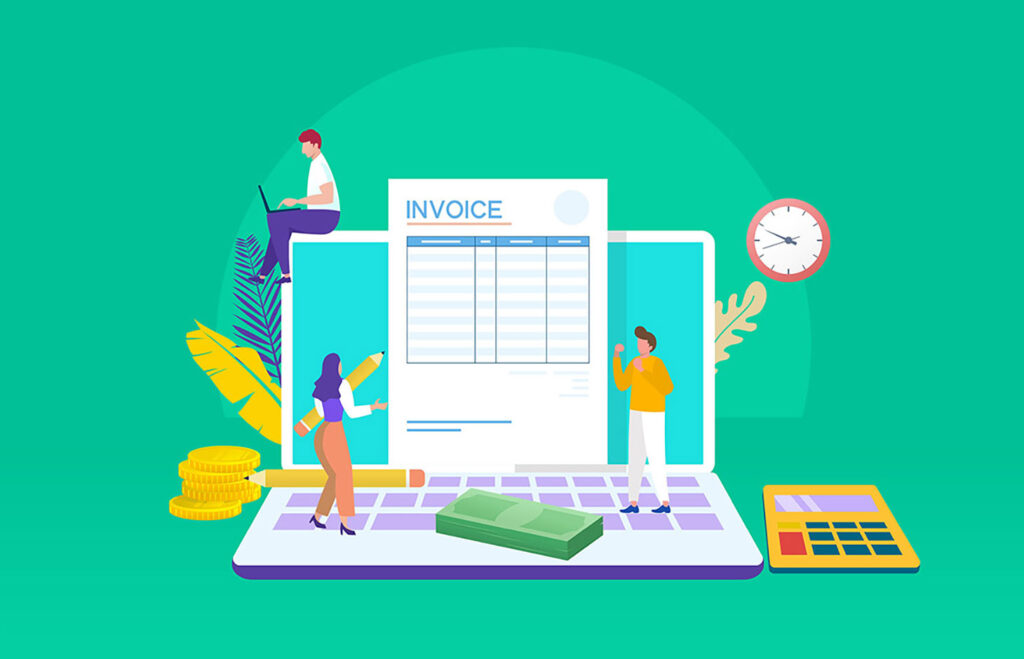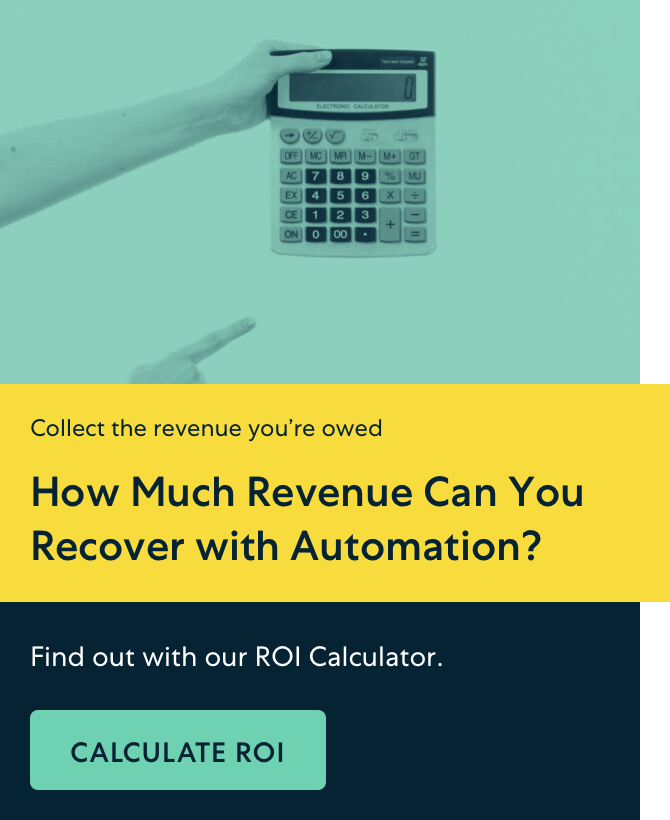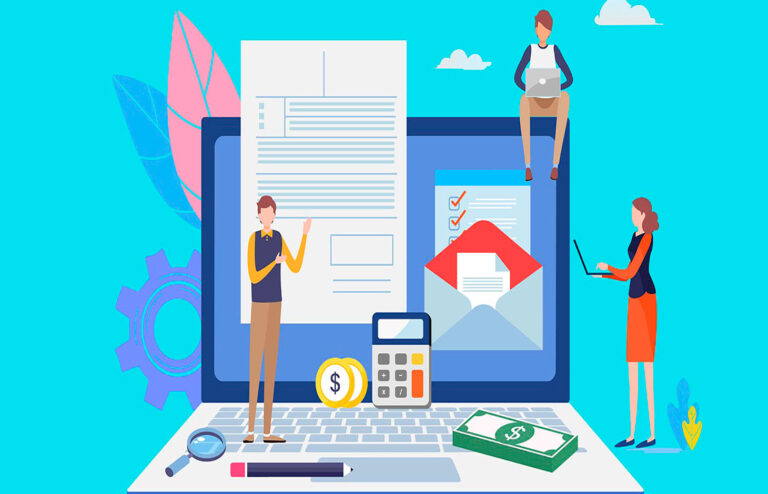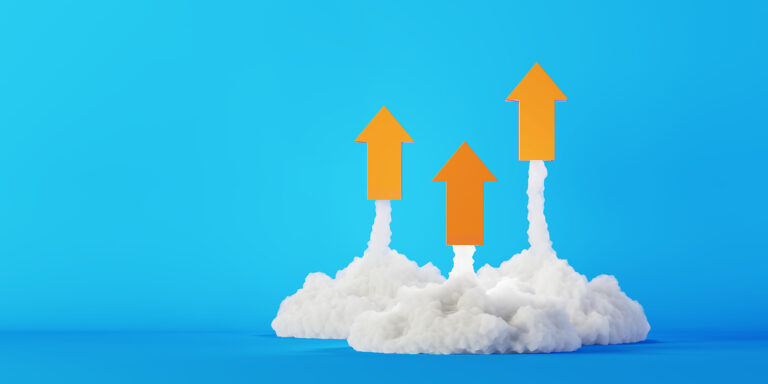Credit sales are vital, but they alone can’t fuel business growth. Optimizing your AR collection process is crucial to help you maintain a healthy cash flow, reinvest profits, and fuel long-term success.
This is why, unsurprisingly, the accounts receivable automation industry continues to expand at 11.8% per year. Businesses now acknowledge the power of streamlined invoicing processes and cash management.
Here’s how and why accounts receivable software is a valuable asset to your business. Read on to learn its definition, key features, implementation strategies, and automation benefits.
TL;DR
- Accounts receivable software is a modern solution that automates and simplifies AR processes. If you decide to invest in one, look for customizable interfaces, API integration, multi-payment options, robust security measures, and performance metrics tracking.
- Integrate bank accounts, optimize communication, strategize your credit management, and more. With AR software, you can automate customer registration, invoicing, payment collections, GAAP-compliant revenue recognition, SaaS subscription management, detailed reporting, and month-end closing for streamlined financial operations
- Elevate your AR management and financial processes with the cutting-edge capabilities of top-notch accounts receivable software in 2024. These solutions offer real-time visibility, streamline communication, automate complex billing, and more.
What is Accounts Receivable Software?
Accounts Receivable (AR) software is a modern accounting solution that helps businesses optimize their entire AR cycle. It provides real-time visibility from sales order generation and invoice processing to customer payment collection.
AR solution often uses cloud-based technology to streamline and automate each stage, improving cash flow and overall financial health. Therefore, the platform mostly caters to the needs of finance teams, including Chief Financial Officers (CFOs), financial managers, and accountants.
Financial managers utilize it to forecast cash flow, while accountants leverage it for accurate record-keeping. CFOs, in particular, find AR software handy in analyzing payment patterns and behaviors. These insights help them set appropriate credit terms, offer early payment discounts, or use third-party collection agencies to minimize bad debts. Strategic credit term management contributes to a healthier AR process.
Accounts receivable software adapts across different business scales and industries, too. It allows your financial systems to expand alongside your firm while meeting industry-specific requirements.
For instance, manufacturing corporations might require an AR solution equipped with supply chain financing and inventory management features. Service-oriented small businesses, on the other hand, may prioritize client billing and project-based invoicing.
In short, AR software varies among providers. Consider these key features when selecting one to maximize its benefits.
5 Key Features of Accounts Receivable Management Software
AR software varies by functionalities and compatibility with existing systems, making the decision difficult for financial managers and SMB owners. Here are the features to look for that can help expedite your AR management processes, mitigate errors, and facilitate on-time payment resolution.
Customizable interface
A customizable interface lets you tailor the software and fit it neatly into your existing workflows. Perhaps your AR processes involve unique approval chains, specialized reporting structures, or specific terminology. With this feature, you can arrange dashboards, menus, templates, and data displays that are intuitive for your team.
API integration
Application Programming Interface (API) integration allows for communication with other business systems, including Enterprise Resource Planning (ERP) and Customer Relationship Management (CRM) software.
Customer, transaction, and financial data information can be shared and updated in real-time across platforms. You avoid operating in silos or depending on manual data entry, leading to delays, inaccuracies, and inefficiencies.
Online payment options
Whether it’s credit cards, digital wallets, or ACH payments, AR software offering multi-payment options can suit diverse customer preferences. This flexibility reduces friction in the payment process. Customers are less likely to encounter obstacles or delays when using their preferred method.
Multiple end-to-end encryption
Financial transactions are prime targets for fraudsters. Fortunately, multiple layers of end-to-end encryption are robust enough to protect your business against potential security breaches. Invest in software with such measures to avoid exposing customer data to hacking, identity theft, and other security risks.
AR performance metrics
Performance metrics track efficiency and pinpoint bottlenecks in the accounts receivable department. Look for a platform that tracks metrics, such as days sales outstanding (DSO), aging reports, cash flow forecasts, and invoice processing times. This functionality lets you detect and address inefficiencies before they escalate, saving you resources in the long run.
Refer to this as a checklist when exploring accounts receivable software options. Now, let’s discuss how to implement the software into your day-to-day operations.
8 AR Software Implementation Tips
AR software implementation should enhance, not disrupt, how you handle your finances. Follow these tips to integrate the new system smoothly into your workflow.
Integrate bank accounts
This integration enables real-time synchronization of financial transactions. Every transaction processed through your bank account is immediately reflected in the AR software.
Optimize cash application
Manually matching payments to invoices is time-consuming and resource-intensive. Automation with a cash application streamlines this process, allowing you to manage more transactions without compromising accuracy.
Enhance communication
Leverage the software’s built-in communication tools to streamline customer communications. Send automated updates, payment receipts, and personalized messages.
Strategize credit management
Configure the software to align with your credit management strategy. Set credit limits and terms, and payment terms. This ensures the system supports your approach to managing customer credit.
Automate payment reminders
Send personalized payment reminders based on customer preferences and payment history. Addressing them by name and providing specific details about the outstanding invoice adds a human touch to the communication.
Implement follow-up procedures
Set up reminders for overdue payments to reduce delinquency and generate more consistent and predictable cash flows. Configure the system to send automated follow-up emails, SMS, or other preferred channels.
Track profitability
Use the AR solution’s reporting and analytics features to track profitability metrics. Analyze data on customer payments, overdue accounts, and successful collections.
Provide user training
Invest in user training to guarantee your team knows the software’s ins and outs. Adequate training shortens the learning curve, minimizes errors, and maximizes the new system’s efficiency gains.
If you notice, automation is the key driver behind the benefits of accounts receivable software. Let’s delve a little more into AR automation to make the best use of it.
How to Maximize AR Software Automation
Don’t let your finance teams drown in time-consuming manual processes. Learn how AR software can take your efficiency to the next level by automating these 7 key operational areas.
1. Customer Registration
Instead of having a sales or customer support representative delve into data entry, order management, and processing a new customer’s registration manually, automate the process. By doing so, the customer can start using your product right away. And less wait time equals quicker time to value.
Modern accounts receivable software solutions offer hosted registration pages for new customers to do all of the following themselves:
- choose an appropriate subscription plan
- configure plan quantities or add-ons
- fill in pertinent customer information, and
- provide their billing details.
Done.
But ensure the software solution you choose allows for white-labeling of your registration pages. Your customers should have a seamless experience with your brand throughout the entire signup process. They shouldn’t be getting distracted by the realization that you’re using such-and-such business’s software to register them.
2. Recurring Invoicing
To collect money from your subscription customers, you need to send them their invoices. Needless to say, the invoice will need to accurately reflect information such as the:
- customer’s billing information
- plan(s) that have been subscribed to (factoring in any plan upgrades or downgrades, or new add-ons), and
- amounts payable.
If your team has been manually typing up invoices from scratch, you’ll be glad to know modern accounts receivable software takes this load off their shoulders.
When the software detects it’s time to bill a customer, it automatically generates an invoice based on the customer’s current subscription plan and details.
This not only saves your team hours in billing and invoice prep time—to the tune of 40-80 hours a week—but also reduces the risk of making subscription billing blunders that could lead to revenue leakage and decreased customer confidence in your business.
Automation helps you avoid negative user reviews while giving you greater confidence in your entire accounts receivable process.
3. Recurring Payment Collections
Want to be paid net-zero? With the right SaaS billing system, you can—automatically.
Modern accounts receivable software solutions hold credit card details on file in secure vaults—in accordance with PCI standards—and charge them as soon as payment is due.
No more waiting around to be paid or having to manually check and confirm receipt of payments. Instead, watch as your invoices are paid immediately and cash collection happens seamlessly with minimal effort on your part!
That said, a customer’s payment may not go through the first time. While situations like this call for dunning management procedures, this doesn’t mean you’ll have to manually follow up with your customers just yet.
Set up your accounts receivable software to automatically:
- notify customers to take action on their failed payment, as well as
- retry their credit cards to help them avoid having their subscriptions move into poor standing.
4. GAAP-Compliant Revenue Recognition
Accurate revenue recognition is an important part of running a compliant SaaS subscription business. However, keeping track of when you can recognize the cash you’ve received as revenue can be tricky.
This is especially true if your customers have different start and end dates for their subscriptions (which they likely will), varying revenue recognition periods, and are able to make one-time purchases in addition to recurring subscriptions.
When you’re shopping around for your ideal accounts receivable software solution, check that it can automatically recognize your revenue based on pre-configured revenue recognition schedules.
For example, you may need to recognize:
- a piece of hardware immediately,
- a setup fee over the lifetime of a contract, or
- an annual plan on a monthly basis.
Whatever the case, the right SaaS billing software will make your revenue recognition a breeze.
5. SaaS Subscription Management
From pricing updates to plan migrations, hierarchy SaaS billing, and more, there’s a lot to be done when managing customers’ subscriptions.
While some processes are necessarily more high-touch in nature, such as negotiating renewals, others easily can—and should—be automated with accounts receivable software.
Here are just a handful of ideas to get you excited about the possibilities.
- Bake price uplifts into your payment schedules. Configure your price uplifts once and forget about them, while being assured they’ll happen right on time. Automating the process of farming your customer base has a huge impact on MRR growth.
- Process plan migrations effortlessly. Does a customer want to upgrade or downgrade, switch to monthly to annual billing, or change something else about a plan? Set up a self-service portal so your customers can do exactly that without having to contact support.
- Link payment methods from parent accounts to child accounts. For customers with hierarchical parent-child-type relationships with their other divisions, branches, or locations, the parent customer may want to use the same payment method for all associated child accounts. Assign these child accounts to the parent and watch as their payment methods are automatically synced. Transactions from all child accounts should also be able to be rolled up into one comprehensive invoice on the parent.
6. Subscription and Revenue Reporting
Importing your data into spreadsheets to manually create reports can be downright painful.
But reports play a crucial role in helping you understand your SaaS business’s cash flow and overall financial health. Without a bird’s eye view of how your business is doing, you won’t know the success of your strategies so far, or what needs to be changed.
Reporting is an area where automated accounts receivable software solutions excel.
As your regular SaaS billing processes feed data into the software, it generates detailed sales, cash, revenue, and monthly recurring revenue reports in real-time.
These reports aren’t static, either.
If you need to change the time period, activation cohort, or other dimensions of your reports, simply adjust your report settings. Then watch as your reports are updated on the fly, ready to be re-analyzed.
7. Month-End Close
When the end of the month rolls around, it’s time to close out your books and finalize your finances. Among other processes, this means checking that all accounts have been reconciled, entering closing entries, and finally planning for the month ahead.
However, manually recording your transactions throughout the month creates a lot of room for human error. And if you discover your books are unbalanced by even just a few dollars, this could mean spending hours trying to identify and fix the rogue transaction(s).
Accounts receivable software built on a double-entry accounting core can make headaches like this a thing of the past for organizations.
Whenever your accounts receivable software logs a new transaction, it will make the appropriate debit and credit accounting entries on your behalf. And all this happens immediately in the background, without you having to worry about whether you’re posting the transaction to the right ledger.
The result is your books will be perfectly balanced, no matter how complex your transactions are, so you can sync your numbers to your ERP or accounting software and perform your month-end close with ease.
Top Accounts Receivable Software for 2024
Accounts receivable software is—without a doubt—a groundbreaking tool for financial optimization. To decide which platform suits your business, compare the features and capabilities of these top AR software solutions.
NetSuite
NetSuite’s cloud accounting software offers real-time AR visibility. It lets you create and dispatch invoices, set credit terms, and streamline collections to boost your credit-to-cash cycle.
Integration is its strongest feature, particularly with financial management, CRM, inventory management, and e-commerce platforms. The accounting software, including AR features, starts at a $999 monthly licensing fee and $99 per user.
Freshbooks
FreshBooks is an SMB-friendly billing and invoicing software. It automates tedious AP and AR processes by creating invoices, tracking billable hours, and issuing automated late payment reminders. Its iOS and Android compatibility allows you to process mobile transactions while on the go.
For businesses with employees, FreshBooks offers a premium subscription for $18 per month. You can send unlimited invoices, set up recurring invoices, and send unlimited estimates and proposals with this package.
Xero
Designed for SMBs and accountants, Xero is a beginner-friendly accounting software that oversees AR management. It features customizable templates, automated invoice reminders, and flexible payment options to streamline the collection process.
This software is handy for those seeking an improved AR cycle without using advanced functionalities. Pricing plan varies at $29, $46, and $62 monthly.
Stax Bill
Stax Bill excels in managing receivables by simplifying complex billing processes. It automates recurring billing, renewals, collections, and reconciliation. Its real-time reporting helps identify and address revenue leakage promptly, allowing you to maintain a healthy cash flow.
Moreover, this SaaS billing solution secures your hard-earned dollar by offering a surcharging feature on credit card transactions. Starting at $199 per month, it offers a suite of billing features, including subscription billing, payment gateway processing, revenue recovery tools, churn prevention, and more.
Learn more about how billing solutions like Stax Bill can optimize your accounts receivable cycle while bolstering your revenue streams.
Automate SaaS Billing with Comprehensive Accounts Receivable Software
As you can see, there are a lot of things the right accounts receivable software can help automate for B2C and B2B companies in the SaaS space.
Imagine all the time and money you can save by outsourcing these tasks to a digitally transformative SaaS billing solution.
And don’t let such savings sit idle, either. Reinvest your cash flow resources into scaling your business even further!
Your trusty accounts receivable software will be there to support your financial growth every step of the way, as you take your business to greater heights.
FAQs about SaaS Billing Processes
Q: What does automation mean in SaaS billing processes?
Automation in SaaS billing processes involves using modern accounts receivable software to handle operations such as invoice generation, customer registration, payment collection, and revenue recognition. This lessens the need for manual handling, thus enhancing efficiency and reducing errors.
Q: How does SaaS billing automation benefit my business?
SaaS billing automation can significantly reduce manual tasks, thereby saving your company considerable time and resources. It reduces the risk of potential billing errors and makes payment collection quick and efficient. It also provides accurate revenue recognition and offers advanced reporting capabilities for better business insights.
Q: What is an example of a process that can be automated through accounts receivable software in SaaS businesses?
An example of a process that can be automated is the generation and sending of invoices to subscription customers. Modern accounts receivable software can automatically detect when it’s time to bill a customer and generate an invoice based on their current subscription plan and details. This not only saves your team time but also reduces the risk of making billing errors.
Q: What features should I look for in modern accounts receivable software?
Essential features include automated invoice generation, secure payment processing, automated dunning management, comprehensive and real-time reporting, efficient revenue recognition, and integrations with your current systems. Also, consider capabilities to manage subscription changes, apply price uplifts, and sync child accounts to parent accounts.
Q: Can automation of billing processes enhance customer experience?
Yes, automation can significantly boost customer experience. Quick and accurate invoice generation, seamless payment processes, and the ability for customers to self-manage their accounts can contribute to overall customer satisfaction and retention.
Q: How does accounts receivable software support month-end financial closing?
Accounts receivable software built on a double-entry accounting core automates transaction recording and balances your books. This allows you to seamlessly sync your numbers with your ERP or accounting software, thus facilitating an efficient month-end close.
Q: How does SaaS billing automation support business growth?
By automating your billing processes, you can save considerable time and resources. These savings can be reinvested into your business to promote further growth. Furthermore, accurate and efficient billing processes can also enhance customer trust, contributing to your company’s reputation and growth.








